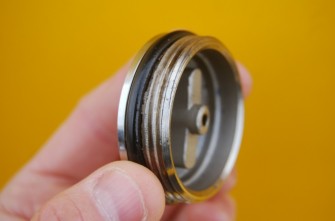
Winterising
If you are planning to take your boat out of commission over the winter, then it important that you winterise the engine otherwise come the spring you may start to incur problems before you launch.
Winterisation is very similar and incorporates a minor engine service. The difference is that half is done in the autumn and the rest is done in the spring just before re-launch.
There are different levels of winterisation depending on the boat or the engine and different engineers will have different views on ways it should be done, obviously, it should be done in line with the manufacturer’s recommendations as a minimum. So here are some of the basics:
Fill your diesel tank. The Reason: This is to reduce condensation in the tank over the winter; we must ensure that water does not enter the fuel tank as the interface between water and fuel is where diesel bug will thrive, if we suspect signs of the bug then this would be a good time to add a fuel additive to keep it under control.
Check the fuel filler cap seal and using a light (Vaseline) smear around the thread to give a better seal The Reason: Again simply to stop any rainwater, over the winter entering the tank, and to make easy to open in the spring
Change and drain the fuel pre-filter. You will find that a large clear plastic lemonade bottle cut in half is ideal for this job as you can drain the fuel and in some cases catch the filter in the bottle and because it’s clear you can examine the condition of the fuel. The top end of the bottle you can use as a funnel to use to pour into a container for disposal. Once you have refitted filters you will need to bleed the system (some fuel filters may need to be filled with fuel from a can) The Reason: It is important that we find out if we have a problem with the fuel, even if the glass bowl is clear. The only way is to remove the filter and inspect it. If you find a problem then you can make a decision about what to do about it well before the spring. i.e You may want to have the tank emptied and cleaned, or what is becoming more popular is fuel cleaning with a filtration system this of course re-uses your fuel which means you don’t have to pay for disposal. If you suspect a problem you may decide to check the pre-filter before topping up with fuel. There are several companies offering this service.
Change the engine oil. Run the engine up to temperature The cleanest and easiest way to do this is to use a vacuum pump. A vacuum pump has its own self contained reservoir and tube that is inserted into the dipstick. This makes the whole process very clean and helps prevents spills. Refill the sump with clean oil and of the correct grade for your engine The Reason: We change the oil to ensure any corrosive acids formed as a product of combustion does not remain in the engine over the winter.
Change the oil filter. This is the messy job and if access is tricky you may need a lot of rags. You will need a good filter wrench one that doesn’t damage the filter. To minimise mess we use a plastic bag such as a pedal bin liner or a freezer bag to put around the filter to catch the oil and filter. Old engine oil is full of carbon and is incredibly hard to clean so try and use a barrier cream on your hands or have swarfege handy afterwards, alternatively, you could wear latex glove but remember the filter will be very very slippery. Reason: Carbon, swarf, and other combustion products build up in the filter and start to restrict the flow so changing once a year is a minimum requirement but should be done as per manufacturer’s recommendations of course. You can never have enough oil changes.
Check the freshwater cooling level and top up. It is also important to ensure that you have the right ratio of water to Anti-freeze. If you have been topping up with just water all season you might like to drain the system and top up with the correct mixture. The manufacture will recommend that the system is drained at a particular service interval. The Reason: Antifreeze or coolant doesn’t just protect your engine from the cold but more importantly act as a corrosion inhibiter that protects the internal waterways within the engine.
Remove the SW pump impeller and tie to the side of the pump The Reason: If the impeller remains in one position for too long then it might become de-formed and become less effective and fail. You should always change your impellor annually at least. I personally don’t like the idea of using the old one as a spare as they tend to fail.
Relax or remove the drive belts The Reason: Again leaving them in one position for several months may cause them to deform and crack In the spring we strongly recommend that you replace them if there are any signs of wear. Sign to look out for is black belt dust on the engine and engine bearers this means the belt is slipping.
Clean the engine and inspect it from all angles looking for anything amiss, check all jubilee clips for corrosion, electrical wiring for corrosion and chaff, and of course any water fuel or oil leaks. This will give you a good amount of time to put things right. Also, make sure the bilges are clean. Clean bilges make it easier to spot faults earlier. Finally after cleaning the engine, coat it with duck oil or corrosion block to prevent any corrosion, pay particular attention to the drive belt pulleys, this must be kept free of rust another wise when the belts are replaced they will wear down in no time.
Batteries: If possible remove them and charge them up and check the water levels. Once charged, the condition of the battery can be checked with a hydrometer measuring the specific gravity of each of the cells and comparing the readings. Check and charge them every month to keep them in order. If Batteries are 4 years old or over then it might be time to think about replacing them.
Exhaust and Inlet: It is a good idea to block off the exhaust and if possible the air inlet to the engine this can simply be done with tape or wooden bung this prevents moisture from getting into the engine. Don’t forget to remove it before you re-float!
Just before re-launching most of the service is done so re-commissioning should be straight forward but remember to check your manufactures recommendations


